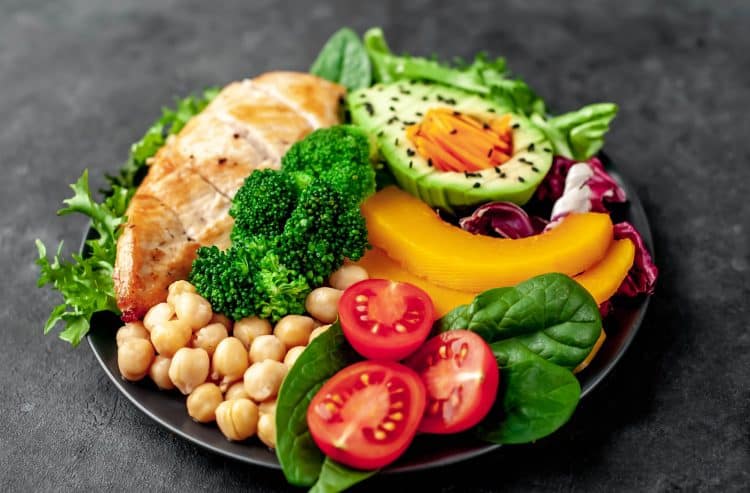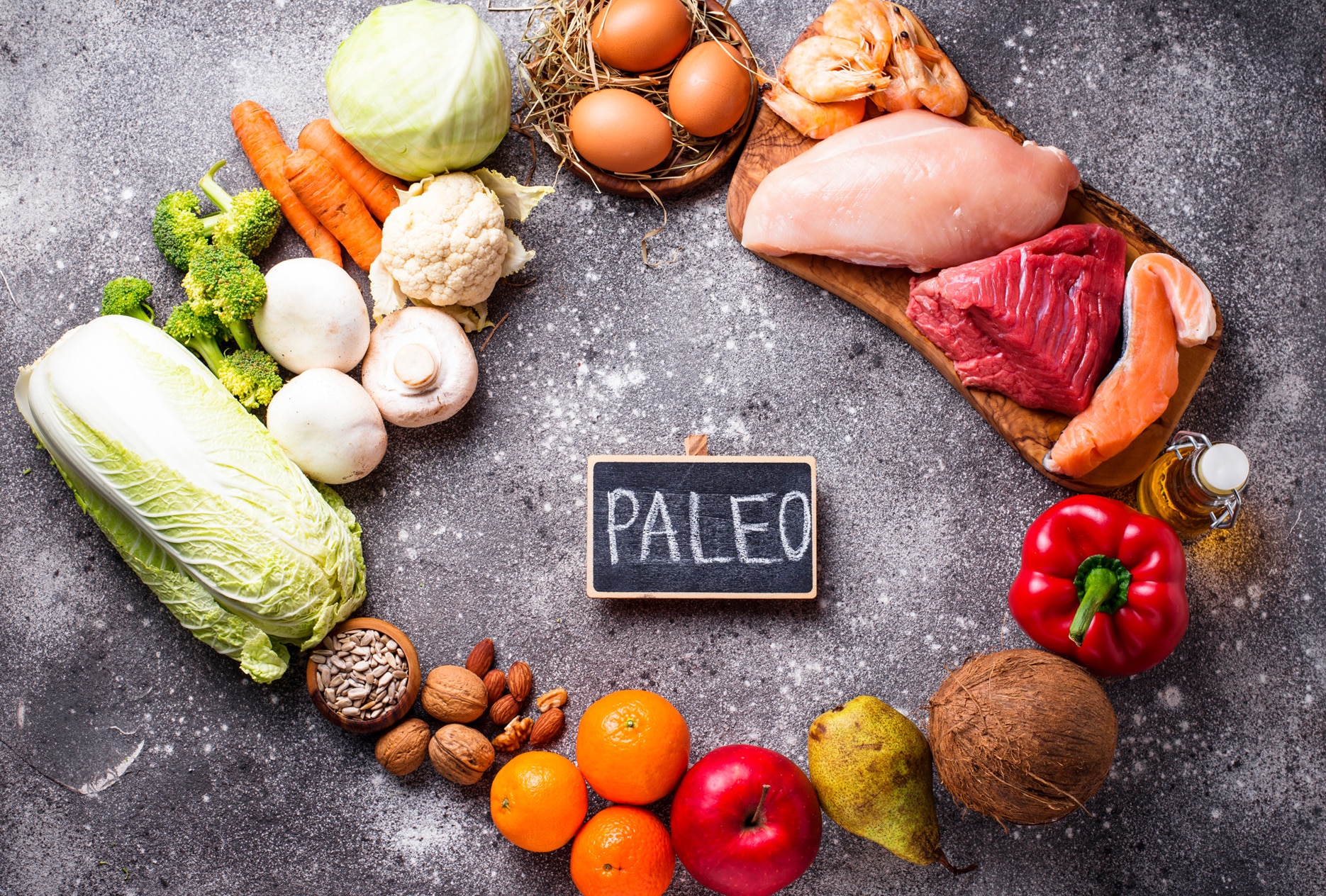Everyone experiences undesired weight gain at some point in their life. Some people realize they have gained extra weight when they notice love handles poking through their favorite shirt; others have an epiphany when they have difficulty bending over to tie their shoelaces.
Whether you gain weight in your early teens or late 40s, it is usually because of the same reasons. Since the causes of weight gain are timeless, so are its remedies. Avoid reinventing the wheel every time you want to lose a few pounds.
Most people want to lose a lot of weight in a very short period. Ask a newbie about their transformation objective, and they will probably tell you they want to lose 15 pounds in a month.
Interestingly, most people quit their weight loss journey without achieving their goals. Setting unattainable goals is one of the most common reasons why most people never attain their transformation objectives. The lack of experience and guidance takes a close second and third.
Is it possible to lose 15 pounds in a month?
Yes, you can undoubtedly lose 15 pounds in 30 days. However, just because you can do something doesn’t mean you should. Losing 15 pounds in 30 days without a plan and proper guidance can be a disaster and lead to health issues.
In this article, we’ll uncover the science of weight loss, discover if it’s safe to lose 15 pounds in 30 days, learn about the best ways and diet to lose fat quickly, and go over some of the most popular questions on this subject. We have a lot to cover. So, sit tight and read on.
How Weight Loss Works

Weight loss ultimately boils down to calories in vs. calories out. You must be in a calorie deficit to lose weight, meaning you must expend more calories in a day than you consume. Once you are in a calorie deficit, your body starts burning stored glycogen for fuel, leading to fat loss.
According to the Centers for Disease Control and Prevention (CDC), cutting 500–1,000 calories from your daily diet can result in a weekly weight loss of 1–2 pounds. Staying in this range will keep your physique transformation journey gradual, steady, and sustainable. [1]
But how does restricting 500 calories a day lead to a 1-pound weekly weight loss?
Per the Journal of the American Medical Association (JAMA), a pound of body fat comprises 3,500 calories. A shortfall of 500 daily calories results in a 3,500 calories weekly deficit (500 X 7), allowing you to lose a pound of body weight. [2]
That said, a pound of body fat does not equal a pound of body weight. However, several studies have shown that a 500 daily calorie cut results in a weekly weight loss of one pound, and hence, this is often used as a standard while designing a weight loss diet program. [3]
Per the CDC guidelines, restricting your daily caloric intake by 500–1,000 calories will result in a weight loss of 4–8 pounds. However, our objective here is to lose 15 pounds in a month.
How many calories do I need to cut to lose 15 pounds in a month?
In line with the CDC guidelines, you would need to cut approximately 1,875 daily calories to lose 15 pounds in a month.
Is Losing 15 Pounds in a Month Safe?
Is a 1,875 calories deficit possible? It depends on your current lifestyle. Folks coming off a bulking diet and eating upward of 4,000 calories daily might find it easy to cut approximately 2,000 calories from their diet. However, if you eat 2,000–2,500 calories daily, a 1,875-calorie deficit can lead to major health consequences.
Most people flock toward fad diets such as the boiled egg diet or the cabbage soup diet for quick weight loss results. However, most of these fad diets have no scientific evidence backing them and can lead to chronic health conditions as they significantly limit your nutrient sources and intake.
Contrary to what most people think, achieving a calorie deficit isn’t limited to restricting your food intake. You can also enter a calorie deficit by burning calories through exercising. Combining a low-calorie diet with a training program is the most effective way of losing 15 pounds in a month.
That said, maintaining a 1,875 calorie deficit is like walking a tightrope. You must consult a healthcare professional before starting a weight loss program, especially if you have an existing condition like diabetes, gallstones, or heart disease.

Factors That Determine If You Can Lose 15 Pounds in a Month
Buckle up for some truly mind-blowing revelations. Hold onto something sturdy while you still have time.
There is no guarantee that you’ll lose 15 pounds in 30 days, even after maintaining a 1,875 daily calorie deficit. You read that right. There are no guarantees here.
Weight loss works uniquely for different people. While your training partner might shed the desired 15 pounds in 28 days, it might take you more than a month. Many factors influence weight loss, including:
Genetics
Your genetic makeup dictates how your body reacts to your diet and training program. Some people will lose fat faster than others. Plus, some folks lose fat from a specific body group before the results replicate in other areas. For example, your training partner might lose fat first from his belly, whereas you might see the magic of your transformation program first on your face.
Your genetics will also determine where you store body fat. You must work around your genetics and design a training program that best suits your needs. Individuals that hold fat in the back of their upper arms should add arm exercises in their workouts to combat the bat wings and tone their guns.
Remember, your genetics might slow you down, but they will not stop you in your tracks. This is also why beginners must always track and assess their progress. Make necessary changes as soon as you discover you are not going in the right direction.
Related: Weight Loss Calculator
Experience
Training and dieting experience is one of the most undervalued aspects of a transformation journey. People that have undergone a physical transformation before experience faster results than newbies.
The quick results are the result of muscle memory. Plus, people that have done something before know what works for them and what doesn’t, saving them considerable time.
Newbies have no reason to hang their heads low. If you lack the experience to fast-track your transformation progress, you can hire a healthcare professional with a proven track record to help you achieve your goal.

Gender and Age
On average, men shed weight and build muscle mass faster than ladies. It is primarily because of testosterone — the male sex hormone. Females tend to store a greater amount of body fat in their lower bodies, whereas males hold it in their upper bodies.
Further, the essential body fat storage in men is 2–5% and 10–13% for the ladies; it is the amount of fat required to maintain life and reproductive functions.
The natural testosterone levels in both genders decline with age, which results in a higher body fat percentage. Weight loss also becomes more difficult with age.
Metabolism
Your metabolic rate plays a crucial role in your weight loss journey. A high metabolic rate helps you burn calories throughout the day, even when you are physically inactive. Men generally have a higher metabolic rate than women. Plus, your metabolic rate declines with age, making weight loss more complex as you grow older.
Use this basal metabolic rate (BMR) calculator to determine how many calories you need daily to maintain your basic body functioning. The BMR calculator uses your age, gender, weight, height, and body fat percentage (optional) to determine how many calories you burn throughout the day.
Regular exercise can help increase your muscle mass and burn body fat, which can help boost your metabolic rate.
According to a popular myth, eating small, frequent meals throughout the day can result in a faster metabolism. However, several studies have debunked this theory. According to a 2015 study, increasing meal frequency from three to six per day might increase hunger and the desire to eat. [4]
To lose fat, you should focus on staying in a calorie deficit instead of trying to tweak your metabolic rate. Find a meal plan that suits your lifestyle and works for you, and stick to it long-term for optimal results.
Training, Nutrition, and Recovery Program
Most people never achieve their transformation goal because of substandard training, nutrition, and recovery program. These folks follow a cookie-cutter transformation program designed for someone else, which delays their results and leads to muscle imbalances.
For instance, a 190-pound female trying to lose 15 pounds in a month will never find success following a transformation program made for a 185-pound male aiming to shed 8 pounds monthly.
Your diet, training, and recovery program must fit your lifestyle, preferences, and habits. You should refrain from making significant lifestyle changes during your weight loss journey. A night owl should resist the temptation to turn around his life overnight by signing up for an early morning CrossFit class. You must ease into your new transformation journey and focus on longevity.

Consistency
Consistency is the key to a successful weight loss program. Weight loss is complex and challenging. Don’t let anyone tell you otherwise. You must do everything right to make the needle budge in the right direction. A wrong step, and you will either hit a plateau or put the weight back on.
Plus, losing 15 pounds in a month is a hefty goal. You must do everything as per plan for these 30 days to maximize your chances of success. It means that you cannot miss a training session or meal or cut down on your recovery time.
A transformation program will test your determination, grit, and consistency. The longer a fitness program, the more challenging it is to stick to it. Furthermore, since losing 50 pounds in a month requires you to follow rapid weight-loss techniques, going off track can make the weight bounce back as quickly as you lost it.
How To Lose 15 Pounds in a Month
Sustaining a 1,875-calorie deficit requires you to make adjustments to your entire lifestyle. Although you could cut almost 2,000 calories from your diet just by eating less, it is not ideal. You must balance your training and diet plan to achieve your weight loss goal of shedding 15 pounds in a month.
Notably, folks that want to lose 15 pounds in a month have short-term objectives. These people don’t want to continue this weight loss program for several months. Hence, you must make quick and significant adjustments to your diet as soon as you begin your weight loss journey.
You must also get comfortable making significant lifestyle changes during this transformation program as you are racing against the clock. Thirty days is all you have; you’ve got to make every one of these days count.
Here are 18 changes you must make to your lifestyle to lose 15 pounds in a month:
Set a Realistic Goal
Most people never achieve their transformation objective because they bite on more than they can chew. To be honest, losing 15 pounds in a month is an ambitious goal too. Sustaining a 1,875-calorie deficit for 30 days is easier said than done.
If you do not have a specific reason to lose 15 pounds in a month, you should aim for a more realistic goal, such as shedding 8 pounds in 30 days. This goal aligns with the CDC weight loss recommendations and is relatively easy and safe to sustain over the long term.
Switch To a Low-Calorie Diet
Weight loss ultimately comes down to calories in vs. calories out. You must enter a calorie deficit to lose 15 pounds in a month. Depending on your current lifestyle, you can either adjust your current diet or switch to a new diet to help you achieve the deficit.
The keto and Mediterranean diets are a couple of popular diets that can help you lose weight, but more on these later in this article. Remember, you must choose a diet that fits your lifestyle. Going vegan might help a non-vegetarian significantly restrict his calorie intake, but it will be extremely hard to sustain if you’ve never tried it before. Always ease into a diet rather than switching to a radically different diet overnight.

Do More Cardio
Although exercising and cardio are not mandatory in a weight loss program, they can help you enter a calorie deficit. You could enter a calorie deficit by eating less, working out, or combining both. Using both options will speed up your weight loss progress.
Since your goal is to lose 15 pounds in a month, you must perform two daily cardio sessions to fast-track your results. The first cardio session should be a 30-45 minute low-intensity steady state (LISS) workout done on an empty stomach first thing in the morning. For the second cardio session, do a 15-20 minute high-intensity interval training (HIIT) workout in the evening.
HIIT workouts are an anaerobic form of training, meaning it relies on stored glycogen for fuel. On the other hand, LISS cardio is a form of aerobic exercise that relies on oxygen for energy production.
Weight Training
Most people leave gains on the table by restricting themselves to cardio workouts during a weight loss program. Resistance training can boost your weight loss results in multiple ways. It helps build muscle mass and tone your physique, improving your physique aesthetics.
Muscle mass is more metabolically active, meaning it burns more calories throughout the day than a pound of body fat [5]. Folks with a higher muscle mass will burn more calories throughout the day than folks with a high body fat percentage. Plus, weight training increases your metabolic rate, helping you burn calories even after your workouts when you are physically inactive.
Incorporate HIIT into Your Workouts
High-intensity interval training is one of the best ways to ramp up your weight loss progress. You shouldn’t limit HIIT to cardio. Perform a bodyweight HIIT circuit or incorporate this principle into your weight training workouts to maximize results.
Tabata, AMRAP, EMOM, ladders, and pyramids are a few popular forms of HIIT. Cycle between these HIIT protocols to keep your workout routine exciting and avoid hitting a plateau. You must also program progressive overload in your workout regimen to make consistent gains. Progressively overload your muscles by using heavier loads, increasing your training intensity or volume, or incorporating advanced training principles into your workouts, such as dropsets, supersets, and intraset stretching. [6]
Prioritize Recovery
You break muscle tissue while you are in the gym. Your muscles grow back bigger and stronger while you’re resting. Even if you do not hit the gym or train, you must give your body enough time to recover and undergo changes. The excess weight comes off your body while you’re asleep.
You must sleep for at least seven to eight hours each night for optimal results. Besides sleeping, you can also use nutritional supplements such as whey protein powders and BCAA to speed up your recovery. Massages, self-myofascial release, and cold and hot water therapy are other excellent methods of streamlining your recovery and boosting weight loss.
Eat Nutrient-Dense Foods

Consuming nutrient-dense whole foods will keep you feeling full for longer, reducing your risk of binging on junk food. Furthermore, nutrient-dense foods often have a low caloric content than processed or refined carbs. It allows you to consume a large volume of food without overshooting your daily caloric target, which can help promote satiety. [7]
Eating nutrient-dense foods also ensures that you meet your daily micronutrient needs, limiting the risk of nutrient deficiencies and promoting overall health and well-being. You must eat a balanced diet to meet your daily macronutrient needs. Switch to a high-protein, low-carb, low-fat diet to fast-track your weight loss and build muscle mass.
Limit Refined Carbs
Refined carbs sources such as white bread, white rice, sugary snacks, and sugary beverages have a high caloric content. Plus, they provide little to no nutritional value. Consuming refined carbs can significantly increase your daily calorie intake. However, since these are empty calories, refined carb sources won’t lead to satiety and might even lead to cravings. [8]
Your body digests refined carbs quickly, resulting in insulin and blood sugar level spikes, which can lead to energy crashes, cravings, and increased fat storage, hindering weight loss efforts. These food sources often lack essential nutrients and can hamper your metabolism.
Eat Fiber-Rich Foods
If your goal is to lose 15 pounds in a month, you must avoid binge eating. Fiber-rich foods are a godsend in this regard, as they keep you satiated throughout the day. High-fiber foods also take longer to digest. Additionally, fiber-rich foods, such as fruits, vegetables, whole grains, and legumes, are low in calories than processed foods.
Eating high-fiber foods also improves your digestion and gut health. A healthy gut microbiome can lead to better weight management and a lower risk of obesity. Foods rich in fiber usually have a high water content, which increases their volume without adding to their calorie content.
Track Your Calories
Losing 15 pounds in 30 days requires you to adhere to a strict dieting regimen. Exceeding your calorie target, even on a few occasions, can disrupt your weight loss aspirations. The most effective way of staying below your calorie limits is to track your calories.
You could use a calorie tracking app, such as MyFitnessPal, to stay on top of your caloric intake. Most calorie-tracking apps have an extensive database of foods and recipes, making food logging easy and convenient. You can skip logging your meals after you’ve settled on a routine.
Tip: Calculate Your Daily Energy Expenditure
Increase Physical Activity
Contrary to what most people think, spending 30 to 45 minutes in the gym isn’t enough to lose 15 pounds in a month. Doing a cardio session early in the morning and sitting at your desk for the rest of the day puts you in the active, sedentary category.
You must program activities throughout your day to limit your risk of developing chronic health conditions associated with sitting for prolonged periods, including high blood pressure and type 2 diabetes. 9]
Walking more throughout the day is a convenient (but not easy) way to ensure you remain active. Beginners can set themselves a 5,000 daily step target and work their way up until they are walking 10,000 steps a day.
Drink a Lot of Water
Staying hydrated throughout the day can keep you satiated, lowering your chances of feasting on junk food. Plus, water is a calorie-free beverage, meaning it won’t add to your calorie bottom line. Drinking an adequate amount of water can also boost your metabolic rate. You must drink at least a gallon of water daily to ensure optional body functioning.
Drinking 500 ml of water 30 minutes before a meal can help limit your hunger. This technique has been shown to lead to greater weight loss in overweight or obese middle-aged and older adults. [10]

Try Fasting
Fasting is one of the most effective ways to enter a calorie deficit. Intermittent fasting is a popular fasting protocol involving cycling between fasting and feeding windows. The 16/8 intermittent fasting (IF) protocol is the most popular fasting method that requires you to fast for 16 hours a day and eat during an eight-hour window.
Unlike most other diets, intermittent fasting doesn’t dictate what you can and cannot eat. In an IF diet, you focus on eating at a particular time during the day. Among other things, fasting helps burn through your glycogen reserves and boost your metabolic rate, which can help you lose 15 pounds in a month. Beginners can start with more conservative IF protocols, such as the 14/10 method, whereas more experienced faster can try the OMAD (one meal a day) diet. [11]
Avoid Cheat Meals
A month is a relatively short period to lose 15 pounds. Although cheat meals have a time and a place, you must avoid them on this program. A cheat meal can put you in a calorie surplus. It is common for people to eat 1,000-2,000 excess calories during a cheat meal.
Offsetting these calories can take you an additional two to three days. Depending on your cheat meal, you could need to cut more than 1,875 calories from your daily diet to get back on track with your weight loss goals. Those serious about their transformation should refrain from eating cheat meals for four weeks.
Cut Out Alcohol
Alcohol is like a double agent. You think it is on your side, but it is scheming with your enemy (body fat) to disrupt all your plans. Alcohol contains a high sugar content; a gram of alcohol generally contains seven calories. Worse yet, these are empty calories that have no nutritional value.
Alcohol consumption increases your appetite and your chances of binging on junk food. It also leads to dehydration and poor sleep and slows down your metabolism. Alcohol does everything that you want to avoid on a weight loss program.

Read also: Alcohol and Muscle Growth – Alcohol Fat Burning.
Manage Your Stress Levels
Chronic stress leads to higher levels of cortisol in your body, which can increase appetite and cravings for unhealthy foods. High cortisol levels also lead to an increase in fat storage in your abdominal area.
Higher stress levels also increase your risk of emotional eating, which never ends well on a fat loss program. Chronic stress can also disrupt your sleep, which can hamper your recovery. Try meditation, yoga, and journaling to combat stress. You should seek professional help if these three methods don’t bring you relief. [12]
Track Your Progress
Since 30 days is a short period for losing 15 pounds, you must track your progress to ensure you are heading in the right direction. Recording your body weight and anthropometric measurement, keeping a workout journal, and taking photos of your physique are the most reliable ways to track your progress.
Remember, you don’t need to track your progress daily. Take your measurement on the same day at the same time every week and make necessary adjustments if you are unhappy with your progress.
Hire Professionals
Most people never achieve their weight loss goal because they follow a cookie-cutter transformation program. Each individual is unique. What might work for your training partner might not work for you. Ensure that you follow a customized training, diet, and recovery program for optimal results.
Seek a professional’s help if you don’t have experience designing a training and diet program. A personal trainer can give you a personalized training regimen, and a registered nutritionist can provide you with a diet plan that fits your lifestyle. Hiring a trainer and dietitian might cost you some money upfront, but it will pay dividends in the long run.
Diets To Help You Lose 15 Pounds in a Month
Although some people can get away with making adjustments to their current meals, others need to revamp their entire diet to lose 15 pounds in a month. If you fall in the latter category, given below are some diets that can help you achieve your weight loss goal. Pick the one that fits your lifestyle.
Keto

A ketogenic diet involves eating a very low amount of carbs and replacing them with fat, as it helps your body burn fat for energy. Studies show that high-fat diets are significantly more effective at helping you shed weight than low-fat diets [13]. Furthermore, a keto diet can improve your training performance as it results in better ATP production than a high-carb diet.
Here is a typical macronutrient split used in a keto diet:
- Fats: 70-80%
- Protein: 20-30%
- Carbs: 5-10%
Next Read: What is Keto Diet? Benefits, Drawbacks, and Sample Meal Plan
Paleo

A Paleolithic diet includes eating whole, unprocessed foods, such as vegetables, nuts, seeds, and meat. The paleo diet involves eating like our ancestors. Studies have shown that a paleo diet can result in significant weight loss and reduce your risk of lifestyle diseases, such as obesity, diabetes, and heart disease. [14]
Check Out: Paleo Dieting: A Comprehensive Guide for Beginners
Mediterranean Diet

The Mediterranean diet revolves around eating foods traditionally eaten in the countries that border the Mediterranean Sea, including Portugal, coastal France, southern Spain, southern Italy, Crete, and much of Greece.
Dieters that eat a Mediterranean diet have lower risks of contracting heart disease and other common illnesses and diseases. These dieters generally live longer and are healthier than folks who eat a standard American or Western diet.
Also Read: What Is the Mediterranean Diet?
FAQs
Do I need to exercise to lose 15 pounds in a month?
No, working out is not mandatory on a weight loss program. That said, doing a couple of daily training sessions can speed up your weight loss progress by helping you enter a calorie deficit.
How long will it take for me to lose 15 pounds safely?
The CDC recommends limiting your daily deficit to 500-1,000 calories, which will help you lose 4–8 pounds safely and sustainably in a month. According to the CDC guidelines, it will take you 2–3 months to lose 15 pounds.
Will the weight I’ve lost come back if I return to my old habits after successfully completing my transformation journey?
Losing and keeping weight off requires lifestyle changes. If you return to your old habits right after achieving your weight loss goal, the weight will come back on just as quickly.
Note: The content on Fitness Volt is for informative purposes only. Do not take it as medical advice to diagnose, prevent, or treat health problems. If you’re suffering from a health issue, are pregnant, or are under 18 years old, you should consult your physician before starting any new supplement, nutrition, or fitness routine.
Wrapping Up
Losing 15 pounds in a month can feel overwhelming, which stops most people from taking their first step. You might not realize this, but you have already taken the first step in achieving your dream physique by choosing to read this article. So, congratulation on taking your first step toward your weight loss goal.
It is absolutely fine to experience self-doubt and frustration before starting to work toward such a big goal; we’ve all been there. Remember, you don’t need to follow all the 18 steps mentioned in this article to achieve your weight loss goals, and you don’t have to limit your transformation timeline to 30 days. Start with making a couple of adjustments to your lifestyle and take your time with your weight loss goal. The results will be worth it. Best of luck!
Related:
References
- Centers for Disease Control and Prevention. (2021). Losing Weight. Retrieved from https://www.cdc.gov/healthyweight/losing_weight/index.html
- Wishnofsky M. CALCULATION OF DIETS. JAMA. 1957;163(5):384–385. doi:10.1001/jama.1957.02970400056024
- Kim JY. Optimal Diet Strategies for Weight Loss and Weight Loss Maintenance. J Obes Metab Syndr. 2021 Mar 30;30(1):20-31. doi: 10.7570/jomes20065. PMID: 33107442; PMCID: PMC8017325.
- Ohkawara K, Cornier MA, Kohrt WM, Melanson EL. Effects of increased meal frequency on fat oxidation and perceived hunger. Obesity (Silver Spring). 2013 Feb;21(2):336-43. doi: 10.1002/oby.20032. PMID: 23404961; PMCID: PMC4391809.
- Zurlo F, Larson K, Bogardus C, Ravussin E. Skeletal muscle metabolism is a major determinant of resting energy expenditure. J Clin Invest. 1990 Nov;86(5):1423-7. doi: 10.1172/JCI114857. PMID: 2243122; PMCID: PMC296885.
- Atakan MM, Li Y, Koşar ŞN, Turnagöl HH, Yan X. Evidence-Based Effects of High-Intensity Interval Training on Exercise Capacity and Health: A Review with Historical Perspective. Int J Environ Res Public Health. 2021 Jul 5;18(13):7201. doi: 10.3390/ijerph18137201. PMID: 34281138; PMCID: PMC8294064.
- Nicklas TA, Drewnowski A, O’Neil CE. The nutrient density approach to healthy eating: challenges and opportunities. Public Health Nutr. 2014 Dec;17(12):2626-36. doi: 10.1017/S136898001400158X. Epub 2014 Aug 28. PMID: 25166614.
- Bradley P. Refined carbohydrates, phenotypic plasticity, and the obesity epidemic. Med Hypotheses. 2019 Oct;131:109317. doi: 10.1016/j.mehy.2019.109317. Epub 2019 Jul 20. PMID: 31443772.
- Pesola AJ, Pekkonen M, Finni T. Why is excessive sitting a health risk? Duodecim. 2016;132(21):1964-71. PMID: 29190048.
- Handbook of Non-Drug Intervention (HANDI) Project Team. Pre-meal water consumption for weight loss. Aust Fam Physician. 2013 Jul;42(7):478. PMID: 23826600.
- Vasim I, Majeed CN, DeBoer MD. Intermittent Fasting and Metabolic Health. Nutrients. 2022 Jan 31;14(3):631. doi: 10.3390/nu14030631. PMID: 35276989; PMCID: PMC8839325.
- Xenaki N, Bacopoulou F, Kokkinos A, Nicolaides NC, Chrousos GP, Darviri C. Impact of a stress management program on weight loss, mental health and lifestyle in adults with obesity: a randomized controlled trial. J Mol Biochem. 2018;7(2):78-84. Epub 2018 Oct 3. PMID: 30568922; PMCID: PMC6296480.
- Giugliano D, Maiorino MI, Bellastella G, Esposito K. More sugar? No, thank you! The elusive nature of low carbohydrate diets. Endocrine. 2018 Sep;61(3):383-387. doi: 10.1007/s12020-018-1580-x. Epub 2018 Mar 19. PMID: 29556949.
- Challa HJ, Bandlamudi M, Uppaluri KR. Paleolithic Diet. [Updated 2022 Jul 4]. In: StatPearls [Internet]. Treasure Island (FL): StatPearls Publishing; 2023 Jan-. Available from: https://www.ncbi.nlm.nih.gov/books/NBK482457/
